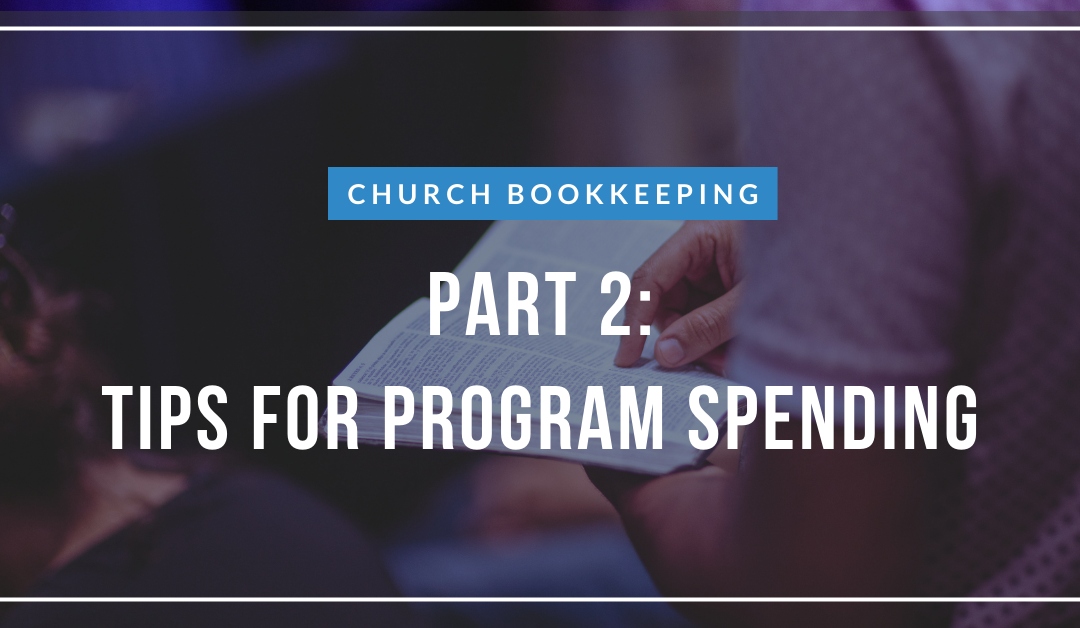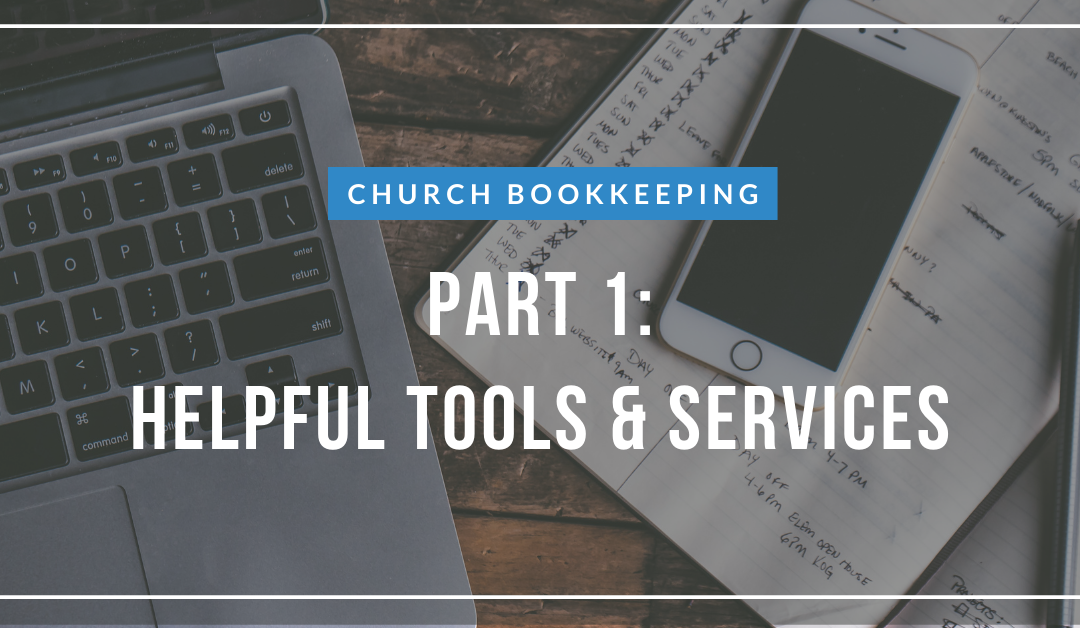
by Chris Williams | Oct 6, 2020 | Blog, Bookkeeping Best Practices
Making the Jump from Solo-Practitioner to Forming a Group Practice
How do you know when it’s time to make the jump to forming a group practice? Many practitioners are impeded by not knowing where to start or wondering if the administrative time and the payroll cost might outweigh the profit. We’ve seen many MHPs (mental health professionals) make that switch successfully by identifying and utilizing apps that are designed to get you there. Before we explain the combination of knowledge and technology required to make this plunge, let’s take a look at some of the factors that you might be weighing as you consider expanding from solo counseling to a group practice.
Why would you do it?
- You’re overbooked! Clients love you and even though you may not have actually fully branded yourself, whatever you are doing is working. Instead of feeling overworked and stressed, spend some time figuring out what that secret sauce is that clients love about the way you do therapy. Hire like-minded professionals you can work with who can provide the bandwidth to add more clients to your practice without you bearing the brunt of those added hours.
- You acquire the opportunity to spread out your overhead costs. There are many therapists who would love to support an existing client base and be relieved of their own need to market, brand, and the accounting and admin that comes with a solo-practice. Make sure you hire the right people because you, as the business owner, are telling your clients that you’ve personally vetted this new therapist.
- You offer or specialize in one kind of counseling. Perhaps you only treat individuals but you keep getting asked by your clients if you can do couples counseling or counseling for kids. Rather than turning them away because you know it’s not your niche, you can add a therapist with those strengths and specialties to your practice without having to refer potential patients out.
To start a group practice the first order of business is to make sure you’ve identified WHY. Is it because you have a good brand that people like and you’re overbooked? Or do you intentionally want to expand? Do you want to diversify your offerings? Do you thrive in a collaborative environment? Knowing your motivation is important and will point you in the right direction for expansion, branding, communications, and networking.
Form the Correct Type of Entity
If you have a solo-practice, hopefully you’ve already taken advantage of the tax benefit of forming an LLC (in some states a PLLC), obtaining an EIN, placing yourself on payroll, and have considered filing as an S-Corp with the IRS. A stellar small-business focused CPA can walk you through the steps and explain to you the tax benefits of filing as an S-Corp.
If you’ve found another therapist who you are going into business with, form a new multi-member LLC (again, this is a great time to consult with a knowledgeable CPA so both owners can make sure they’re minimizing personal taxes) with a new EIN. Don’t let these details overwhelm you! There are plenty of CPA’s who can help you take these steps (we as accountants know quite a few).
Tracking Everything – The Apps
As a business owner, be sure to track everything! There are many practical tools that you can use to keep your finger on the details of your practice. Do your research and choose one piece of software that will handle almost everything an MHP will need to do with clients (scheduling, insurance billing, remote sessions, electronic paperwork, accepting payments, etc). A few that we’ve worked with are ChARM (https://www.charmhealth.com/) and Simple Practice (www.simplepractice.com).
Many of these can connect with an accounting software (Quickbooks Online is our go-to) for income recording. Most also have excel reports that can be exported to do a deep dive into reviewing margins and average billing numbers. Whatever it is you pick, you do need to ensure it can provide that all-important income reporting so that an accountant can take that info and integrate it into the accounting software where all expenses live.
A great accountant can help you build out basic margins tracking based upon billable sessions and pay rates for employees. Whatever you build should be scalable so that what works for 3 people can work for 10. No need to go fancy on margins reporting, Google Sheets is usually sufficient and it can be connected to QBO as well for automatic updating of your numbers. We often rely upon our own internal data specialist to build automatic reports like this for our clients; and though it requires expertise outside of the realm of normal spreadsheeting to build, once it is built, it can be easily run and refreshed as needed. The same holds true for calculating what you can afford for overhead and owner pay once you understand your margins and standard expenses.
Hiring Employees – It’s the Group part of “Group Practice”!
The Taxes
Even if you already have an EIN and have been paying yourself via payroll, odds are you didn’t open up a state unemployment insurance account as business owners are exempt from these taxes (you can’t really fire yourself and legitimately claim unemployment). Most states have online applications that can be completed in 15 minutes and an unemployment account number obtained same-day or within 2 weeks. Make sure you’re also covered with workers compensation insurance (some states have state-sponsored programs, other states you will be required to purchase via private agencies). Once applied for and received, whatever your current payroll system is should be well prepared for you to add new hires into.
If you don’t already have payroll up and running, we would recommend Gusto as a great small-business friendly system that allows 100% online hiring and onboarding of employees. Gusto also has some great articles that can help to give direction on the various state payroll tax accounts you’ll need to apply for depending upon what state you are located in.
The People
To hire good people you need to have a good employment proposition. A large portion of that is going to depend upon how you communicate what you’ll be offering in terms of compensation. There are two fairly common approaches but both are based around fees per session and how much gross profit you need to be left with to pay overhead and to pay yourself (and potentially any other owner).
- Pay a percentage of each session – In this scenario, you hire therapists and tell them their pay will be x amount of the fees they bring in during the month (say a 60/40 split or a 70/30 split). This is a guaranteed way to make sure you can always cover that employee’s salary as they’re only being paid for what they bring in. However, you want to be sure that the balance covers your own overhead such as rent, utilities and other professional fees (like accounting!).
- Pay a base wage and then create a variable compensation structure for fees brought in over that base wage – Guaranteeing you’ll cover everyone’s base salary with this method is a little more risky, but it is a more attractive employment proposition as employees see a direct correlation between more client sessions brings exponentially more pay. In this scenario and as an example you’d offer a base salary at the state minimum for professional positions at $24k. If a billable session is $100, you know they’ll need to have at minimum 20 sessions a month to cover just their salary. Any sessions in excess of those needed to cover payroll go toward paying overhead expenses. Since 20 sessions is considered to be a very low caseload, you can make the minimum 35 or 40 sessions a month and pay a portion of those revenue earnings out as additional compensation (i.e. you get 80% of the session fee for any session booked in excess of your established minimum, or even up to 90% if you book over 60 a month).
While it might seem small, additional perks are a great way to make an employment offer more desirable. Healthcare is always an option to add for full-time employees. As a small group employer you can usually pick a percentage of the monthly premium to cover and then have the rest deducted pre-tax from employee paychecks. An annual continuing education stipend is also attractive ($300 a year) along with additional pay for any time spent team-building or aligning everyone with your brand. Free supervision for those working towards full licensure is also a great addition that doesn’t take up much of your time as an owner, and also gives you an opportunity to train that person on the brand you’re building to pull more clients into the practice.
In Conclusion
At the end of the day your practice won’t grow steadily unless you hire the right people who will support your goals and work well with your clients. Take time to interview thoroughly and have a great employment proposition that provides for increased pay and growth opportunities in the future. Above all, make sure you’re hiring people who concur with your mission, vision and values. And finally, when you research, locate, and utilize the tools that will help you minimize time spent on administrative and accounting tasks, you and your team can focus on that which is the most important element of your successful practice; your patients.

by Chris Williams | Sep 16, 2020 | Blog, Bookkeeping Best Practices, Non-Profit
Welcome to part two of our three part series on bookkeeping and finance specific to churches. This second part of the series covers program spending, restricted funds, and taxes. If you haven’t read part one it covers SAAS tools and services, I recommend reading that first since this part of the series builds on what was covered in part one, and you can look forward to the final part about budgeting.
Here in part two we will cover the aspects of church bookkeeping that often get overlooked as churches grow and operations and activities become more complex.
Program Spending
As a church grows, various ministries and programs start to take shape that require expenses, and sometimes income, to be tracked separately. Good examples of this are kids ministry, worship, building/operations — things that would often be considered “departments,” or “business segments” in the for-profit world. One option is to simply create new accounts for them, which works most of the time. However, what happens when the church wants to see supplies used by the kids ministry and the worship band separately? What if there are other accounts (food supplies, small equipment, etc.) that need to be tracked separately as well?
As this complexity grows we recommend creating “Classes” (a Quickbooks term) for each of the ministries. Terms for this vary across the accounting world but it’s essentially a way to show each ministry or program as a distinct column on the income statement. That way, it’s easier to see the goldfish crackers consumed (and sometimes inhaled) by the kids ministry separately from the muffins and croissants bought for the worship band’s Sunday breakfast.
The word of caution here is to only create “classes” for ministries where this type of separation is needed. It’s okay for other programs to exist as only an account since it’s easier to read an income statement containing three columns versus ten columns. As outsourced bookkeepers and solutions providers, this is a great opportunity for us to advise on what works best for each church’s specific needs and goals.
Restricted Funds
Most bookkeepers cringe when they hear the term “restricted funds,” and for good reason. In accounting this prompts potentially bitter memories of releasing expenses, changes to net assets, and tracking restricted income. This is usually a fair reaction because it can quite literally cause a headache with the multitude of accounting rules that dictate these funds.
Fortunately, all these requirements are only needed if the church is regularly audited according to U.S. GAAP standards. Since most churches do not fall under these standards, the process can be simplified more than you might realize!
What are “restricted funds” exactly? As with every non-profit in the country, each donation is given with an intent on how that donation will be used and organizations are bound by that donor intent. However, if churches are clear on how donations will be spent, and create a “general fund” with clear language that it will be used for general church operations and ministries it can safely be assumed that donors understand and are providing donations for that purpose. For this reason it is important that these expectations are clearly displayed or stated.
Problems arise when a donor states they would like their donation to be spent on a more specific purpose (i.e. choir robes, kids ministry, sprinkler repair, etc.). If the donation is accepted, then the donation is legally restricted to be used for that purpose. In most cases a quick conversation with the donor can convince them to change their designation to the general fund, but if not, that donation is now restricted and has to be tracked that way in the books.
It’s also perfectly normal for churches to intentionally set up a restricted fund especially if they need to raise funds for a special purpose. The most common example is a building fund set up to pay for a new roof or replace a furnace. This is most often associated with a special giving drive.
Whatever the case, the church needs to easily demonstrate two things in the books:
- How much money was collected for this purpose?
- How much money has been spent for this purpose?
Going back to the first section in this article the most effective way to answer these two questions is to set up a Class for the fund, especially if the expenses need to go to multiple accounts on the income statement. For almost all churches, using Classes will ensure that the expenses and income for the specific purpose are not mixed in with other general church giving and expenses and those two questions can be easily answered.
Taxes
I often hear the phrase “churches don’t pay taxes,” and while this is generally true there are some exceptions. These exceptions appear when churches start to engage in activities more commonly associated with for-profit companies. Here is a quick list of the more common exceptions:
- Selling books or merchandise
- Hosting a concert with paid public admission
- Collecting royalties for published content
- Receiving rent for parking lot spaces
- Fee income for a church-operated daycare
The term for these activities is “unrelated business income,” meaning they are unrelated to the normal operations of a church. All churches are required to fill out a 990 form to the IRS every year, but if they collect business-type income they are required to fill out a 990T form.
It’s important to note that just like with for-profit business some expenses related to these activities can be deducted against the income received, so it may be worth tracking the associated income and expenses using Classes, as mentioned above. Also, these types of income may be taxable to state government agencies. As outsourced bookkeepers it is important to be aware of all the income our church clients are receiving, and be able to advise them on if they are liable to pay taxes on some of their activities even if we are not the ones actually preparing the tax filings.
Final Thoughts
Currently, churches are coming under more and more scrutiny as we diversify our traditional institutions and as they change the scope and variety of ministries and services they offer. Because of this, it is important that churches stay under compliance with all tax and business laws. Keeping a clean set of books where it is easy to demonstrate how money is spent is crucial to building a healthy church.
It may seem complex to answer the many questions about how money is spent, but this process can be simplified immensely by working within the structure of a well thought out and organized budget. With clear, well formatted intentions, categories, and processes for delegating funds the process for reporting them only gets easier! Stop by next week for the final part of the series on church bookkeeping — budgeting!

by Chris Williams | Sep 2, 2020 | Blog, Bookkeeping Tech, Non-Profit
Oftentimes church bookkeeping can be a lot more difficult than for-profit bookkeeping due to the extra regulatory requirements placed on churches by the IRS and state government. We understand that these nuances can be incredibly difficult to navigate. As outsourced bookkeepers, it is our job to be experts on how to address the unique challenges of churches, and advise them on how to address those challenges in the most streamlined and efficient way possible.
We want to help relieve the sense of complexity with a three part series on bookkeeping and finance specific to churches. The three topics you can look forward to learning more about are:
Part 1 – SAAS Tools and Services
Part 2 – Program Spending, Restricted Funds, and Taxes
Part 3 – Budgeting
Let’s begin the first part of this series by taking a close look at the tools required for accurate and efficient church bookkeeping.
SAAS (software-as-a-service) Tools and Services
System Six believes that “outsourced” and “cloud bookkeeping” are dependent on each other. Even more than before, it is crucial that records and accounting be accessible no matter where people are working. Choosing cloud-based programs is not only convenient, but wise for security, availability, and quality of service for a much affordable price. Every recommendation is based on this premise.
Quickbooks Online
The first decision is to select a good bookkeeping/accounting tool. In almost all situations, I recommend Quickbooks Online (QBO) for its integration potential with other SAAS (software-as-a-service) tools, and the ability to directly connect to the activity feed for most banks and credit card companies. If the books are currently stored on a complicated collection of Excel spreadsheets, it’s probable that there is only one person who can help troubleshoot the system if there is a problem. QBO allows for multiple user access, and in turn allows for separation of duties between different bookkeeping roles spread across in-house church staff and you as the outsourced bookkeeping solution. It supports a team approach to bookkeeping that allows openness, checks and balances, and transparency across accounts. At just $20-40 per month, the benefits of choosing a “one stop shop” tool are well worth the investment.
Donor Management System (or DMS)
Each year churches and non-profit organizations scramble to provide year end statements to their donors. While the IRS does not require end-of-year statements to be sent by non-profit organizations, what they do require is that any donor claiming a charitable deduction on their taxes must provide proof of their donation, and a “written acknowledgement” by the organization fulfills this requirement. Since many church/non-profit donors will likely ask for this “acknowledgement” early in the year when they are working through their taxes, it is smart for all churches to be proactive. It is more efficient to prepare and send all the statements at once, rather than generate a single statement in response to every email or phone call from a donor.
Most churches start out small, so it is tempting to track donor information as well as donations within QBO. However it is most beneficial to be able to provide a donor statement upon request at any given moment. While there are some workarounds in QBO, most DMS’ are equipped to easily generate such a statement.
Here are some additional features common to most donor management systems:
- Providing a login to every donor so that they can view their donation record online.
- Batch reports providing a breakout of amounts contributed to each church fund.
- Ability to upload a letter template (for example, a year-end letter from the pastor), and insert a total amount given to every fund, where specified, and then email from the system along with the donor statement.
- Built-in merchant account or integration with one where donors can pay using ACH/credit card, and those donations are automatically posted to their donor account.
Each of these features by themselves offer significant savings in both time and capacity for everyone involved! Here is a good starting list of systems that we most commonly work with:
If you are interested in additional merchant accounts that integrate with some of these systems:
At this point, you likely have a burning question running through your mind, and that is “if I am tracking donations in a separate system, how do I get that information into QBO?” Oftentimes churches will try to double up their records in QBO and DMS, but generally this is unnecessary.
All you really need from QBO is financial reports because the DMS is tracking donor data. In QBO, all you need to track is the amount deposited and the breakout of the income.
It’s worth noting that NeonCRM (listed above) actually has an integration with QBO that will batch the donations and create a deposit entry in QBO that matches both the credit card and bank deposits. If the church you are working with receives a lot of ongoing donations, this is a huge time saver!
Final Thoughts
It’s important to note the unique relationship between a church and it’s donors. Primarily, that almost all donors regularly attend that church, and can visibly see how the money is spent and the results of their contribution. At any time, it is smart for a church to be ready to answer financial questions from their regular attendees, and they need to have the tools in place to quickly and easily answer those questions. As outsourced bookkeepers, we are in a great position to advise and manage the tools and solutions that remove financial pain points for the churches we serve.
We understand that there are similar frustrations in regards to budgeting, taxes, and spending, so look forward to the next two parts of this series. Church bookkeeping can be complicated, but with help from dedicated experts, it doesn’t have to be.
by Chris Williams | Aug 27, 2020 | Blog, Bookkeeping Tech, Leadership
Earlier this year, one of our favorite payroll providers, Gusto, decided that  one of the best ways to continue to innovate its product was to build an advisory council composed of the experts who use it every day: their accounting partners. After invites and interviews, Gusto created its first Gusto People’s Advisory Council (GPAC) with an exclusive set of members to act as their panel of experts for product and service feedback. GPAC is meant to be heavily relied on as Gusto works on releasing platform updates for payroll, benefits, and HR.
one of the best ways to continue to innovate its product was to build an advisory council composed of the experts who use it every day: their accounting partners. After invites and interviews, Gusto created its first Gusto People’s Advisory Council (GPAC) with an exclusive set of members to act as their panel of experts for product and service feedback. GPAC is meant to be heavily relied on as Gusto works on releasing platform updates for payroll, benefits, and HR.
Forty firms are represented after the selection process and I am super excited to represent System Six alongside the various companies that are part of GPAC. There’s a wide variety of small and large firms from all areas of accounting, tax and finance. The Gusto team heading the program are super innovative, pose great questions and ideas, and desire to integrate our feedback on the Gusto product.
Representing People Well
The most recent update to Gusto was the release of their People Advisory Certification. Over the past year and with the advent of COVID, it’s become more and more apparent that payroll cannot be separated from other employment practices (What kind of benefits do you offer? What kind of benefits can you offer? What are the state-mandated sick leave laws? Are you required to offer PTO?). The People Advisory Certification is designed to train accountant-users how to utilize the HR features built into the Gusto software to better advise our clients through these and similar questions.
As always, we at System Six strive to represent and advocate for you at every turn. With ever-changing products and procedures, we aim to be on the edge of new developments. It’s our hope to be the first to bring you services that can support your business goals and systems. This partnership with Gusto will allow your concerns and input to be directly channeled to those who have the ability to make improvements. I can’t wait to see what changes will be made that will directly improve your user experience and am proud to represent System Six and our clients on this panel.




 one of the best ways to continue to innovate its product was to build an advisory council composed of the experts who use it every day: their accounting partners. After invites and interviews, Gusto created its first Gusto People’s Advisory Council (GPAC) with an exclusive set of members to act as their panel of experts for product and service feedback. GPAC is meant to be heavily relied on as Gusto works on releasing platform updates for payroll, benefits, and HR.
one of the best ways to continue to innovate its product was to build an advisory council composed of the experts who use it every day: their accounting partners. After invites and interviews, Gusto created its first Gusto People’s Advisory Council (GPAC) with an exclusive set of members to act as their panel of experts for product and service feedback. GPAC is meant to be heavily relied on as Gusto works on releasing platform updates for payroll, benefits, and HR.

